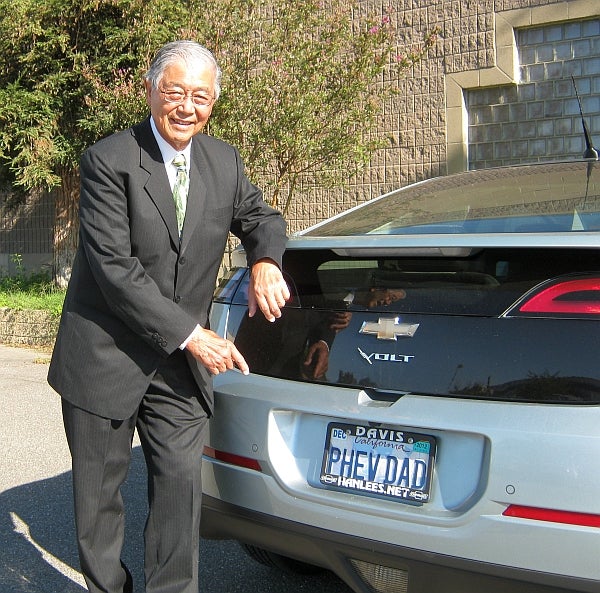As a Huffington Post blogger once wrote, UC Davis engineering professor Andrew Frank is “a true environmental hero and inventor who knows more about converting [conventional cars] into clean, mean hybrid electric vehicles than anyone in the country.”
This week, Frank will have received his latest career accolade when he is named one of Automotive News’ first-ever “Electrifying 100” — the most influential people behind the vehicle electrification movement. He’ll be feted today (June 13) at the Henry Ford Museum in Dearborn, Mich., during the Automotive News Green Car Conference.
Frank’s rise to fame began with building hot rods in high school in the 1950s. "Our objective was to improve the product from the major car companies, which wasn't very good and wasn't very efficient," Frank said. "Even as I became educated, I continued to think about how to get better performance and better fuel economy."
He earned bachelor’s and master’s degrees in engineering at UC Berkeley in 1955 and 1958, then went to the University of Southern California for a doctorate in electrical engineering.

Worked on hypersonic flight research
He spent 10 years in aerospace engineering, working on the X15 hypersonic flight research project that preceded the Apollo moon missions.
Then he returned to his automotive roots. In 1972, he developed what may have been the first plug-in hybrid car, and set a goal of designing a car that would drive 100 miles on a gallon of gas and also accelerate from 0 to 60 in six seconds or less.
Frank’s UC Davis students soon became famous in college engineering circles for being the only team that brought hybrids to Detroit car-of-the-future competitions. They have built 12 such cars since 1991, including a Chevy Suburban that competed in the national Futuretruck competitions. Some of his hundreds of students went to work in the auto industry.
A vindication of sorts
When major automakers brought the first gasoline-electric hybrid cars to market in late 1999, it was vindication of Frank’s insistence that there was a better technology than the internal-combustion engine.
However, unlike Frank’s cars, those hybrids did not recharge their batteries from plugging into the electricity grid. Their power supply was generated onboard when the driver stepped on the brakes.
While Honda Insights and Toyota Priuses became common, Frank continued to engineer plug-in hybrids.
Own company refines inventions
In 2006, he established a company, Efficient Drivetrains Inc. (EDI), to refine his inventions for market. In 2007, the Institute of Transportation Studies at UC Davis established a Plug-in Hybrid Electric Research Center to conduct the first consumer studies of plug-ins.
Finally, on Dec. 21, 2010, Frank became one of the very first people to take delivery of a mass-produced plug-in hybrid: the Chevrolet Volt. Some of his former students had worked on the Volt’s design.
On June 13, when the “Electrifying 100” are honored, Frank will enjoy the recognition. But he’s not done yet – he thinks Detroit is getting better, but they still need to bring down plug-in hybrid prices.
Related link: “Father of the plug-in hybrid gets a Chevy Volt” Egghead blog, 12.22.10
Media Resources
Andy Fell, UC Davis News and Media Relations, ahfell@ucdavis.edu
